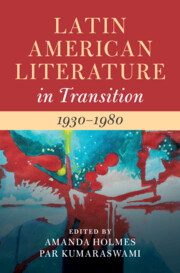Book contents
- Latin American Literature in Transition 1930–1980
- Latin American Literature in Transition
- Latin American Literature in Transition 1930–1980
- Copyright page
- Contents
- Contributors
- Introduction
- Part I War, Revolution, Dictatorship
- Part II Metropolis and Ruins
- Part III Solidarity
- Part IV Aesthetics and Innovation
- Index
Chapter 7 - Mexican Miracle Modernism
from Part II - Metropolis and Ruins
Published online by Cambridge University Press: 24 January 2023
- Latin American Literature in Transition 1930–1980
- Latin American Literature in Transition
- Latin American Literature in Transition 1930–1980
- Copyright page
- Contents
- Contributors
- Introduction
- Part I War, Revolution, Dictatorship
- Part II Metropolis and Ruins
- Part III Solidarity
- Part IV Aesthetics and Innovation
- Index
Summary
This chapter underscores what I will call “Mexican Miracle Modernism”; that is, the emergence of literary forms and styles tied to the rapid population growth, economic modernization, and urban development that characterized the period. The key figure to be studied is Salvador Novo, whose work is often recovered in terms of his alternative sexuality and his role as chronicler. Building on those lines of inquiry, I will claim that he is in fact the precursor of a form of urban modernism that will become central in both fictional and nonfictional narratives from the 1960s onward. The chapter will also discuss the rise of the detective novel (Rodolfo Usigli, María Elvira Bermúdez, Antonio Helú, and Luis Spota will be key) and the importance of the Mexican gothic (Rafael Bernal and Francisco Tario).
Keywords
- Type
- Chapter
- Information
- Latin American Literature in Transition 1930–1980 , pp. 116 - 130Publisher: Cambridge University PressPrint publication year: 2022

